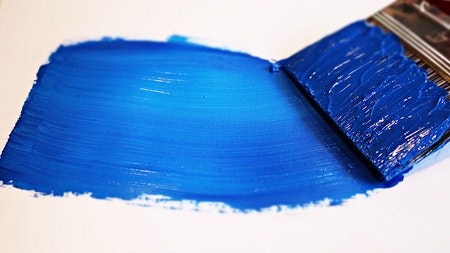A lick of paint can work wonders in changing a room’s aesthetic and is fairly inexpensive. However, painting a room entails more than just choosing a colour, putting on your overalls, and splashing paint on walls.
You need to take great care not to get paint on surfaces that shouldn’t be painted, such as skirtings, cornices, and floors. And, cleaning up properly after the job is an important step in ensuring a professional look.
Step one
Once you have finished painting, tip any excess paint from the roller trays back into the tin. To make it easier to re-open the tin for future paint jobs:
- Carefully wipe the outside edge and inside rim of the paint tin.
- Then press the lid firmly back on. Tap down all around the edges with a rubber mallet.
Yourself
The next step is to ensure you don’t have paint on yourself or your clothing to avoid inadvertently spreading any paint drips around your home. Carefully check the following:
- Hands and arms.
- Sleeves.
- Socks and the soles of your shoes.
Brushes
When you are sure you are paint-free, you need to clean your brushes and rollers before the paint on them dries.
For water-based paint, rinse brushes and rollers under a cold running tap until the water runs clear. Then wash them in warm water with some detergent and rinse again under cold running water.
For solvent-based paint, clean brushes with a solvent-based cleaner such as turpentine or thinners. Wash them in warm water with some added detergent, then rinse in cold water.
To store brushes, wrap them in absorbent fabric, such as an old dishcloth, and secure them with masking tape. This will ensure that they return to their original shape while they’re drying. Store them flat so that the bristles don’t bend.
Tools
Thoroughly clean all your painting tools and equipment so that you can reuse them for future paint jobs.
- Tools and equipment could include ladders, steps, edgers, scrapers, and paint trays.
- As with brushes and rollers, use warm, soapy water for water-based paint and a solvent-based cleaner to remove solvent-based paint.
- To prevent rust, carefully dry metal edgers, and scrapers before storing them. A light film of oil on hinges will also help to keep ladders in mint condition.
Paint splashes
Paint splashes, on fittings or glass, can be easily removed. Once the paint has dried, scrape the surface gently with a glass scraper or a blunt knife. Then wipe with a damp cloth.
Dropsheets
If you have some wet paint on your dropsheets, fold the edges towards the middle so that you don’t get drips on surrounding surfaces.
- Take them outside and open them up to lie flat with the paint-splashed surfaces uppermost.
- Wipe up as much of the paint spills as possible with a disposable waste cloth or kitchen towel. Keep a refuse bag handy to drop the soiled cloths in. Close the bag securely and pop it into the refuse bin.
- Then allow the dropsheets to dry before shaking them out and storing them for future use.
With clean-up completed, your brushes and tools will be ready to tackle the next paint job.



